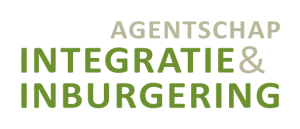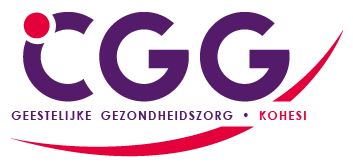Welcome and integration
Services
Mentor Training
With mentor training you will be supporting one or more employees in the mentorship role. The mentor receives tips and handles to introduce the new colleague to your company, to familiarize him with his job, tasks and working procedures, and to integrate him into the team and the company culture. A mentor is also the primary point of contact for practical questions from a new employeeand therefore enables youto save time.
More info & contact:
Job and language coaching in the workplace
An external company coach supports your employee from the start, on and off the work floor, in settling into the job and functioning within your team and company culture. Your manager and team will also receive coaching on: communication and collaboration, use of clear standard Dutch, creating involvement, tools for coaching non-native speakers, visualising work processes, etc. Language coaching pays extra attention to language (and jargon) in the workplace and how your manager and team can support the employee in this regard. A job and language coach is a point of contact for both the employee and your manager and will enable you to save valuable time.
More info & contact:
Training on accessible communication
With tips & tricks your management and team will learn in an interactive way how to communicate more fluently, orally and/or in writing, with employees with a migrant background. They learn how to communicate work orders, safety regulations, work procedures, welcoming brochures, etc. in clear and simple language. Your team will also learn which forms of communication and support they can use at each language level (for example: using pictograms or apps, starting up Dutch exercises, etc.).
More info & contact:
Agentschap Integratie en Inburgering
Training on how to work with diversity.
Together with your team and the new employee, you look at how diversity can be given a place in your workplace, how various cultures and customs are dealt with and how you can remove barriers. The trainer discusses experiences and difficulties encountered in the field and guides your team towards an appropriate approach. This training can also be linked to information, advice, guidance, work sessions or a combination of these working methods.
More info & contact:
Learning in the workplace
Through workplace learning (IBO(T), BIS, internships, etc.) and learning on the job (article 60/61, voluntary work, etc.) you experience what skills your new employee has and how he cooperates within the team. You can further train/educate hard and soft skills in a specific training trajectory. The employee, your management and team often also receive coaching in the areas of soft skills and integration in the workplace. In addition, you can compensate for the possible loss of productivity in the first few months through reduced salary costs. Advantageous for you as an employer ànd simultaneously creating opportunities for candidates with little experience.
More info & contact:
Vocational training
Through vocational training, your employee can acquire job-specific skills and knowledge. There are various forms of vocational training, organized by different partners. Sectoral training funds provide sector-specific day courses or refresher courses, the VDAB organizes day courses and online courses, colleges and universities provide education for working students, the Adult Education Centers offer day and evening courses and Syntra organizes evening courses and refresher courses.
More info & contact:
Job and language coaching in the workplace
An external company coach supports your new employee on and off the work floor in getting acquainted with the job and functioning within your team and company culture. Your manager and team can also expect coaching on: communication and collaboration, clear standard Dutch, creating openness and involvement, tools for coaching non-native speakers, etc. The language coach pays attention to language (and jargon) in the workplace and how your manager and team can provide the new employee with support. A job and language coach is a point of contact for both the employee and your manager thus enabling you to save time.
More info & contact:
Training in appreciative coaching of teams and employees
Your manager will receive tips and tools to motivate the new colleague and to guide him where necessary. The coach pays attention to an action plan in which hard and soft skills, knowledge of the Dutch language and well-being on the work floor are key. This provides tools to follow up and coach the employee in his career development. This increases the chance of having competent and satisfied employees that you can keep on board for a longer period of time.
More info & contact:
Dutch training in the work place and beyond
The employee with a migration background can follow a Dutch training course in the workplace. During this course he can practice the Dutch that is needed to perform the job well. Simultaneously colleagues and managers are taught how to communicate clearly with the employee. Are you recruiting an employee with a migrant background via an IBO? In that case he can receive free language coaching..
For language training outside your own workplace, refer the employee to Agentschap voor Integratie en Inburgering. This agency screens the employee's Dutch language level and learning skills. Based on this, they will direct your employee to the most appropriate course at a Center for Basic Education (CBE), a Center for Adult Education (CVO) or a university language center.
More info & contact:
Job and team crafting
Your employee will complete a process in which he seeks the best match between his professional goals and his individual talents, drives and preferences in working style, taking into account the organizational objectives and the room for regulation in your company. With minor adjustments in terms of tasks, working conditions, cooperation or work perception, you can often realize a major impact. You can also go through this process at team level. In this way you can use each team member's talents, create workable jobs and prevent absenteeism, while achieving the objectives of your company.
More info & contact:
Tips
Use this checklist. Have a mentor go over a welcome brochure. with information on your company (organization chart, mission, vision, etc.) and practical information (working hours, house rules, leave arrangements, organization chart, etc.) together with the new employee. You can find an example here. This checklist contains an overview of the information the employee should receive. Monitor the start of the new employee with this welcome checklist.
Bring people with different (cultural) backgrounds together. This stimulates the learning of practical/technical Dutch and the integration of a new employee both in the team and on the work floor.
This can be done during a meeting, via e-mail, intranet, a newsletter or you can ask the new employee to introduce himself through one of these channels. Have him talk about his competences, hobbies, interests, ...
Focus not only on settling in to the specific job but introduce the employee to colleagues and internal departments during a guided company tour. Inform him about the company culture and give him time to get used to the new work situation. A warm welcome does not stop after one day or week. It is a learning and integration process. Also, be sure to ask your team about how the new employee is being integrated. Make some adjustments to your company culture if you notice that not everyone feels at home in your organization.
What is obvious to us in terms of work (ethos), may not be for someone from a migrant background. Culture often comes into play. Some examples:
- Is it appropriate to look at a supervisor during an interview or not?
- Are people expected to wait for their tasks or should they on the contrary take the initiative and think about what can be done more efficiently and organize their own tasks?
- Is it a weakness to make mistakes and are you hiding them in order to uphold your status or are you learning and growing by making mistakes and admitting them?
Describe what behaviors are consistent with your corporate culture and communications. Identify unexpected behaviors and have a conversation about them. Invite the employee to do the same. Through mutual understanding and dialogue, you will prevent potential misunderstandings and bridge cultural differences.
In each culture there are taboos. In Belgium, for example, wages are not openly discussed, in certain other cultures it is not customary to talk about women. Speak up - without judging - if an employee with a migratory background brings up a topic that is not appropriate. Also encourage him to do the same from the start.
People from migratory backgrounds are often not accustomed to Western evaluation interviews. As a result, they may come across as "superficial" or "thoughtless. Be supportive of them by making your questioning as concrete as possible. For example, "Take a look at your tasks. What tasks could you do even quicker/better/more efficiently? What do you need to do in order to accomplish this?" Give them time to consider this in advance. Repeat regularly and ask questions to stimulate self-reflection.
Even in an open corporate culture, a conversation with a supervisor may not be obvious. Inquire what company cultures are usually like in the country of origin, and how employees there are supposed to deal with management and supervisors.
People from backgrounds in migration do not often come from a service culture and approach their manager with all sorts of questions. For example, about health insurance, legal regulations, housing, transport, driver's licenses, child care, etc. Refer them to a job and language coach on the workfloor. In this way you save time, take away the employee's worries and prevent absenteism.
Is your employee not feeling well, despite your efforts to integrate him into the job and into the team? This may be a signal that he is experiencing stress or that the impact of a trauma is hindering his general functioning. Talk about it and/or refer him to professional help. You can turn to Solentra for guidance or specific questions for a psychologist.
Do this by applying the eight keys from the diversity compass and by facilitating a good work environment Need a team process? Check out the offerings of the diversity academy or the Agentschap Integratie en Inburgering. More tips on culture-specific and personal questions, and on dealing with resistance, can be found here.
Check here how you can recognize discrimination. Have a mentor/godfather take on a protective role, as a buffer against discrimination and to help sensitize colleagues.
Take into consideration experiences and training from a different context, since there could be considerable advantages in this as well. Also assess the added value of these for your company and for the local markets!
A migration process, for example, requires a lot of competencies. Focus on the learning capacity, motivation, and initiatives that the employee displayed while undertaking his journey to Belgium and since his arrival here.
Therefore, hard and soft skills are often present in different contexts. They can also be refined or learned through a growth path. For example, through advantageous forms of employment with training on your work floor.
Faith and trust in the new employee are prerequisites for successful employment. If the employee feels comfortable in your workplace, growth is often possible.
A mentor will ensure that the employee with a migrant background is accepted into your team. Choose someone with an open attitude to other cultures, who is good at networking and who will encourage to follow social and informal rules in your company. Also take into consideration who would be good at teaching the job and all associated tasks. Divide the role among several people if you do not find these different qualities in one person.
It can be of value to choose a mentor with a different cultural background. For example, have someone with Moroccan roots act as a mentor for a new Flemish employee. A mentor can refine his skills through a mentor training.
Keep room for dialogue and determine together what actions and partial steps the new employee can take. Encourage him to give input, to be open and to ask questions. Does he support the goals selected? Does he believe in their feasibility? Is there anything else that can support him? What else does he need? Leave room for adjustments. Communicate your own findings and expectations in a clear and positive manner. Check whether you are on the same wavelength and make agreements for the future.
Involve them from the start and schedule a meeting to inform them about the new employee, his duties and how his growth trajectory will unfold. Also clarify the tasks and responsibilities of your management and team, for example in a welcome and integration scenario. This can range from introducing the new colleague and helping him to integrate the team, to welcoming him, training him, correcting him, etc. . This will avoid ambiguities and create involvement. Both your management, team and the new employee must be open to a growth trajectory.
Cooperation requires adaptation and social skills from both the new employee and their work environment. Working together and integrating is a mutual process of getting to know each other's habits, values, culture and styles and methods of communication. Create dialogue during informal moments so that colleagues get to know each other and understand each other's otherness. A mentor can facilitate this while also incorporating your company's boundaries and rules into the conversation.
Schedule regular short follow-up and feedback sessions and focus on what the employee is supposed to learn in the coming days/week. For example, discuss weekly for about 10 minutes what is going well, what should be improved and what he needs to achieve this. Check how he feels and what his needs are. Adjust your training program accordingly. Explain that it is important to know what is (not) going well, in order to offer adequate training.
Are there any skills that need to be taught or refreshed? Check the offer of your sector and/or training fundwhich often includes relevant training courses in terms of hard and soft skills. Check what financial support is available. For example, the SME portfolio for education, and training or coaching incentives available from your sector or training fund.
Private sector employees are also entitled to attend certified training courses, during working hours. You, as the employer, can ask for a reimbursement for such training. More info can be found here.
Some sector funds offer training in different national languages, or in English. Do you think your employee is more comfortable speaking French or English? Have a discussion with him and the sector fund about which language is most suitable for his training.
If the knowledge has to be particulary clear and detailed, choose the language your employee is most familiar with. If he has to expand his professional jargon, have him take a course of a topic he is part acquainted with, so he can focus more on professional terminology.
Review your welcome brochure. for straightforward language and rewrite where necessary using simple sentences, illustrate text with images, or refer to company videos that explain what is expected or how procedures are structured.
Have a job and language coach participate in a welcome day and provide him with the work instructions and procedures. During a conversation with the employee he can examine whether all information is sufficiently clear. If necessary, your management will receive tips on how information can be made more accessible or can be presented in more visual terms.
In the communicatiewaaier of Agentschap Integratie en Inburgering you will provide you with practical tools such as translation apps, pictogram booklets, etc. The brochure beslismodel helps your employees understand which language is most appropriate depending on the employee's level of Dutch. Offer tips on clear and efficient communication, language in the workplace and clear oral and oral language use.
Create practice opportunities where the employee can use Dutch in concrete situations. Be sure to discuss this with your leadership and incorporate it into the growth plan. Also, engage colleagues and inform on how they can contribute. More tips on learning and practicing Dutch in and outside the workplace can be found here.
Also consider for each situation whether speaking only Dutch on the workfloor is advisable. Sometimes using additional languages in the workplace can provide added value: a few tips.
Dialects are difficult for any outsider to understand, foreign language speaker or not. Download here free pocket dictionaries to provide support for non-native speakers and their colleagues in the workplace, or check out these language tips and a here met tips voor op de werkvloer.
Here you will find language tips, a page of suggestions and an inspiration list of easy replacement words. Be sure to use visual aids to clarify text. Consider pictorial books and/or translation apps, or a self-recorded video in which actions are explained as they are being shown. You can find inspiration and examples in this blog, and the websites diversiteitspraktijk and klaretaal. Need some assistance? A language coach or any of the following organizations can be of assistance.
Are you worried that your customers expect perfect Dutch? Are you concerned that you will lose customers if employees do not master the Dutch language perfectly? An external language coach can assist your new employee in the areas of language, integration and customer communication.
Refer him to Agentschap Integratie & Inburgering. Refer him to the Integration & Inclusion Agency. Your employee will be provided with information about the courses that best match his capabilities and expectations. Here you will find other possibilities to learn and practice Dutch. Discover with VDAB tips how you can support him in the workplace.
Check out the brochure 'Maak van taal werk'.





